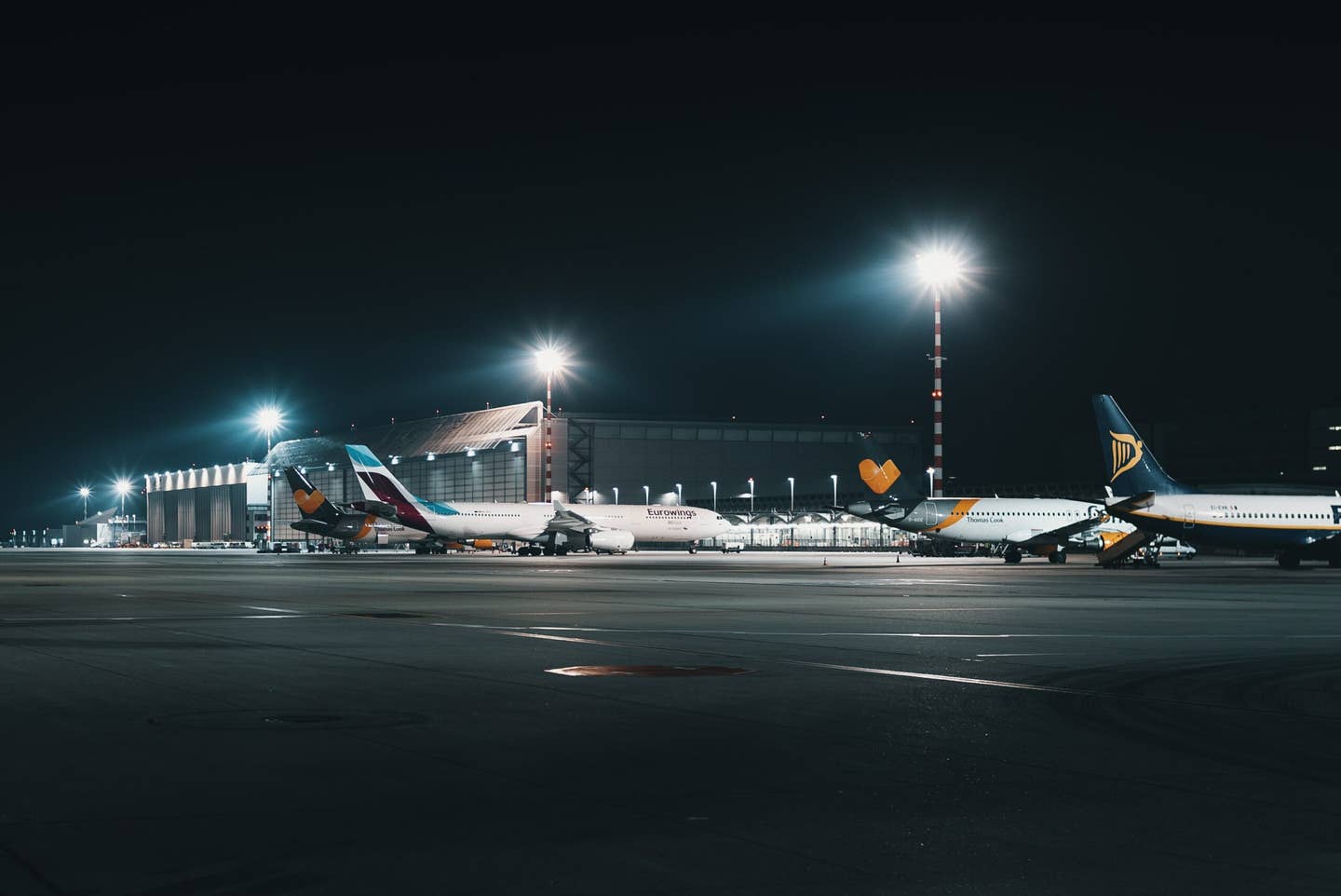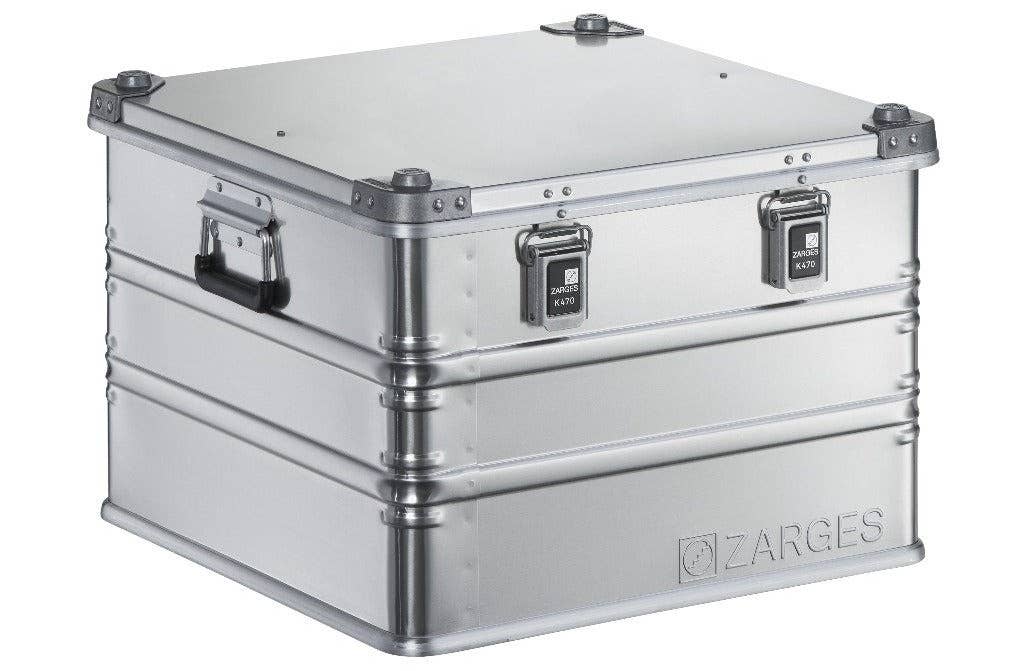
Flying at night can add different challenges than day time flights. [Credit: Unsplash]
If you have ever been on a late-night flight and found yourself walking out of the airport terminal, you might have glanced at the empty gates and dark airplanes. That might have caused you to think that aviation shuts down overnight, but that’s far from the truth.
Once the sun sets, a whole different side of aviation reveals itself and takes to the skies until the wee hours of the morning. For pilots, a unique set of requirements and skill sets comes into play for late night flights.
Why Do Planes Fly at Night?
Aviation is a 24/7 business where the clock is little more than a number for the departure or arrival of planes flying at night. Certain segments of the industry kick into high gear once the sun sets, particularly freight operations and air ambulances or medical evacuations.
Every weeknight, FedEx’s World Super Hub in Memphis, Tennessee, becomes the world’s busiest airport. Each night, an average of 1.3 million packages arrive, are sorted, and head back out to their next destination via hundreds of aircraft carriers.
How Does Flying at Night Work?
Night flying brings its own set of challenges. Fatigue becomes a potential issue for pilots even when they are relatively used to flying at night. Poor lighting in the aircraft can cause issues for navigation during night flights as well.
The night sky makes it hard to read instruments and discern surface features. Plus, it can lead to inadvertent flight into instrument conditions. Proper planning takes these threats into account and makes for as safe a flight as possible.
Pros & Cons of Flying at Night
While night flying brings certain concerns into play, it also offers numerous benefits for pilots. As daylight heating gives way to nighttime cooling, the air generally becomes smoother and convective weather dissipates, providing a better ride for passengers and less work for pilots. A lower number of aircraft in the skies reduces the workload for air traffic controllers and frequently allows pilots more options for shorter, more direct routes.
What You Need to Know to Prepare to Fly at Night
No matter a pilot’s experience level, a good preflight routine can help them prepare for a night flight.
Planning
A good first question to ask prior to night operations is if a pilot is current to be doing the operation he or she is intending. Before flying passengers at night, the pilot has to ensure they have performed three takeoffs and landings to a full stop in the previous 90 days.
Remember this has to be in category, class, and type so an airline pilot can’t just hop into a single engine airplane on his or her night off and take their friends flying. Be sure to check Notices to Airmen or NOTAMs. You don’t want to arrive at your destination airport and find out the runway lights aren’t working.
Operations
Night operations can vary from easy to quite convoluted depending on a pilot’s familiarity. Particularly at an unfamiliar airport ensure you have reviewed any taxi diagrams and have an idea of what to expect at large airports. Keep in mind that the local airport fixed base operator (FBO) might close overnight, leaving you with no way to get back to your plane.
Takeoff and Landing
As mentioned above, keep in mind your night takeoff and landing currency requirements before any flights at night. Be prepared for all options on takeoffs and landings, particularly given the relatively limited landing light illumination on some general aviation aircraft.
A rejected takeoff or go-around might be the best option if you find a deer in your landing light beam. Familiarize yourself with the area around your departure and destination airports and along your route of flight in case an emergency situation leaves you unable to make it to the runway.
Signal Lights/PAPI/VASI
For many pilots, the last time they looked at light gun signals was at their last checkride. If you don’t have them committed to memory, it’s worth having a reference card in your airplane if you plan to fly at controlled airports at night.
The FAA mandates in 14 CFR 91.129 that pilots operating to a runway at a Class D airport maintain at or above any visual guidance such as a PAPI or VASI until necessary for a safe landing. Even in other classes of airspace where it is not mandated, maintaining the PAPI or VASI, or utilizing an electronic glidepath such as an LPV approach, is an excellent tool for all pilots.
It’s even standardized at airlines and quality corporate and commercial operations. But double check the Chart Supplement, which was formerly the Airport or Facility Directory, also known as the AFD.
Some visual glidepath indicators, such as Palm Springs/KPSP runways 31L and 31R, are unusable beyond a certain distance or outside of alignment with the runway due to terrain and while they may indicate that you are on the glidepath, you may in fact be passing dangerously close to terrain.
Illusions
Visual illusions can manifest themselves in different ways during daylight, night, and instrument flying. The FAA’s Airplane Flying Handbook dedicates an entire chapter to night operations and lists numerous illusions a pilot can encounter while flying at night including autokinesis, a ‘black hole’ effect, problems with flickering lights, and the feeling of being too low on an approach. Pilots should be familiar with these illusions and ensure they are adequately monitoring their instruments at night rather than relying solely on visual cues.
FLYING Magazine Offers Tips for Night Aviators
Flying at night can be a particularly rewarding experience for pilots and passengers alike. With a proper planning process and taking into account potential threats and issues, a pilot can ensure the flight is safe and enjoyable from the start. Subscribe to FLYING Magazine to stay up to date with the latest in aviation.
FAQ
Is it safe to fly at night?
With proper planning there is no reason a pilot cannot safely accomplish a flight at night. Pay particular attention to picking a safe route, particularly in a single engine airplane or helicopter. Though a flight over terrain or open water may save time, a longer route over flat terrain may be the safer choice.
Do pilots sleep while flying?
With the exception of augmented crews operating commercial flights that are in the sky for more than eight hours, pilots certified to fly in the United States should never sleep while the aircraft is in flight. However, outside of the United States, controlled rest is a common occurrence. In fact, it is encouraged by the International Civil Aviation Organization or ICAO.
Why do planes fly low at night?
Generally, aircraft that are flown at night will operate within the same altitudes as aircraft flown during daylight. While personnel on the ground may feel an aircraft is lower due to the infrequency of overhead aircraft at night, operational rules normally encourage higher altitudes at night to offer more opportunities for emergency landings. Plus, it increases the likelihood that they’ll be able to avoid terrain and obstacles more successfully.

Sign-up for newsletters & special offers!
Get the latest FLYING stories & special offers delivered directly to your inbox






